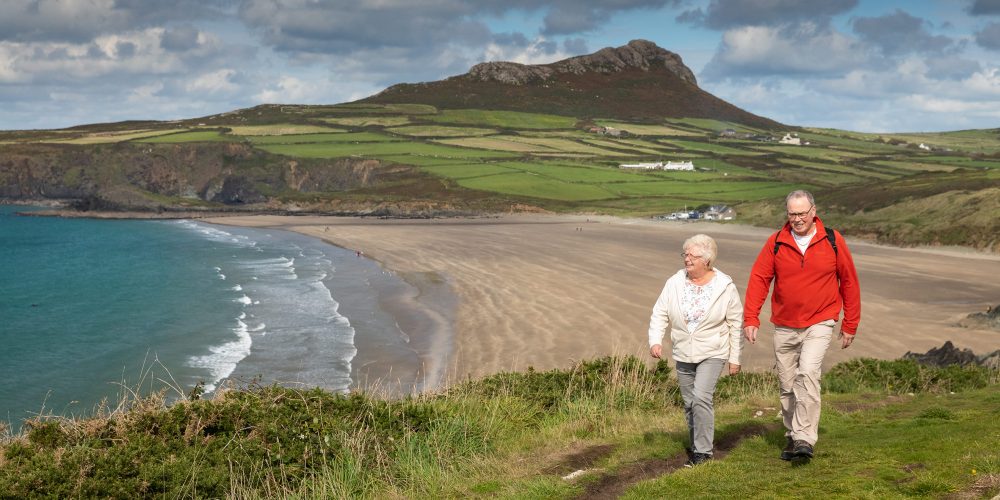History and wildlife on the Pembrokeshire Coast Path
Lying almost entirely within the Pembrokeshire Coast National Park — Britain’s only truly coastal National Park – the Pembrokeshire Coast Path displays an array of coastal flowers and bird life, as well as evidence of human activity from Neolithic times to the present.
The Pembrokeshire Coast Path was the first National Trail in Wales – opened in 1970. This tour covers the 98.5km between St David’s and the end of the Trail in St Dogmaels.
Out in the invigorating sea air, a diverse ecosystem of wildlife and coastal fauna thrive. Seals, dolphins and unusual species of seabird appear along the wild stretches of seaboard that define the Pembrokeshire Coastal Path. In spring, the clifftops are covered with wildflowers, hyacinth, sea anemones and a vibrant swathe of meadow flowers as you travel on foot. Holidays in the summer are the best way of witnessing the gorse and heather winding over the hills of the coast.
You’ll see fulmars, cormorants and guillemots nesting on the highest cliffs and offshore on Skomer, colonies of puffin. More seals nest here than anywhere else in Wales from mid-summer and dolphins, porpoises and the occasional basking shark can be spotted offshore or in the waters below the sea cliffs.
As well as offering walkers spectacular coastal scenery and wildlife, the Trail passes through a landscape rich in the history of human occupation and maritime history. Walking the Trail reveals Neolithic cromlechs, Iron Age promontory forts, churches and chapels of the seafaring early Celtic saints and their followers, links with the Vikings, Norman castles Napoleonic forts.
Throughout the length of the Trail small quays, lime kilns and warehouses, are reminders of an industrial tradition.
But it is in the quieter, remote and wild places peopled largely by birds and visited occasionally by grey seals, that the spell of old Pembrokeshire – the ancient ‘Land of Mystery and Enchantment’ (Gwlad Hud a Lledrith) remains.
Tour Overview
The icons below highlight the distance, difficulty and theme of this itinerary.
Distance
98.5km
Days
7 Nights / 6 Days
Grade
Moderate
Theme
Coastal / History / Wildlife
Landscape Type
Rolling Countryside / By Water / Connecting Towns and Villages
History and wildlife on the Pembrokeshire Coast Path
Every step of the journey has been carefully planned to help you make the most of your walking adventure. Click on the blue tabs below for more information.
- Tour Details
- Itinerary
- Accommodation
- Travel
- Advice
- Food & Drink
- Maps, Guidebooks and Merchandise
Tour Details
 This itinerary is offered by Celtic Trails, They believe that there is no better way to see and appreciate the natural world around us than through walking it. For over 20 years, they have had the pleasure of helping walkers on their journey, with their distinctive personalised service and character accommodations.
This itinerary is offered by Celtic Trails, They believe that there is no better way to see and appreciate the natural world around us than through walking it. For over 20 years, they have had the pleasure of helping walkers on their journey, with their distinctive personalised service and character accommodations.
This tour includes 7 nights accommodation with 6 walking days. Arrive in St David’s on day 1, walk from day 2 and depart from St Dogmaels on the morning of day 8. An option to walk this route over less days is available.
Your holiday will include a good standard accommodation at a mixture of guesthouses, farmhouses, local inns and B&B’s with ensuite or private facilities wherever possible, breakfast, luggage transfers, personal transfer between accommodation and path where necessary, route planning and a Walk Pack including a Trail Guide and Harvey’s map.
To find out more about this itinerary and make an enquiry or a booking, click on the Enquire Now button at the top of the page. The Save to My Rucksack button allows you to save itineraries to view later, or to download them as a PDF.
Itinerary
Day 1 - Arrive in St David's
Arrive in St David’s and spend a few hours exploring the smallest city in Britain. City status was awarded in 1995 although the roots of St Davids go back to the 5th century when St David himself, the patron saint of Wales, lived here.
St Davids Cathedral is built from a local stone with a beautiful pink and grey colouring. It occupies the valley floor below the village. As you approach from The Square, you can’t see the Cathedral until you get fairly close. When you pass through The Gatehouse, it’s magnificently revealed in front of you.
Next door to St Davids Cathedral is the ruin of The Bishops Palace and well worth a visit.
The newest facility is the Oriel y Parc Gallery. The National Park visitor centre has been extended to accommodate a state of the art gallery used to display national treasures. The gallery is open all year and is free of charge. There is also a cafe on site and lots of useful information for visitors.
There are several interesting shops and great places to eat and drink in St Davids. There’s also a good seasonal local market there on Thursdays from April to end of September.
Day 2 - St Justinians to Abereiddi
As you follow your route back out onto the clifftop path, you’ll see Carn Llidi, which peaks out at above 181 metres and is a prominent fixture of your route around the jagged rocks of the coast path’s northern sections. Ahead is the beautiful Whitesands Bay, the first long stretch of sandy beach since Newgale.
Your path curves around the promontory of St David’s Head, where behind you are the long stretches of sand at Whitesands Bay and the familiar landmark of Ramsey Island looming in the distance. This is one of the most secluded sections of the coast path, with the landscape a colourful blend of gorse and heathland as you step out into one of the more difficult sections of the path, with some prolonged steep sections. However, the view from the top is quite exhilarating, and from here the walking become far easier with the landscape changing from rugged, jagged rocks and inlets to a path that often follows the edges of fields.
From here the walk is a more relaxed experience down to the tiny community of Abereiddi, once the site of a large slate quarry. Since its industrial use the side wall of the quarry was blasted to create a channel where the water flooded in to form what is now known as the Blue Lagoon, surrounded by steep, rocky cliffs.
15.7km / 9.8 miles
Day 3 - Abereiddi to Aberbach
From Abereiddi, Traeth Llyfn is one of the first coves your route meets, as you follow the route over the high cliffs towards the coastal village of Porthgain. This is a great spot for bird-watching as well as spotting some more examples of earlier industry in the old brick buildings dotted around the coast from when the slate quarries were still in use. Still standing in the former busy port of Porthgain are impressive brick hoppers which dominate the coastline as you follow the route that climbs above the harbour.
From here the route is a lot more level and easy-going than previous sections, with a route dotted with ancient obelisks and small collections of stone circles. From here you’ll bypass the small village of Abercastle, with the twin beaches of Aber Mawr and Aber Bach up ahead and the slopes leading up to it becoming gradually steeper. From here the clifftop route drops down to the coast for the end of today’s route.
15.7km / 9.8 miles
Day 4 - Aberbach to Goodwick
Re-join your route climbing above the coast today, on a path through fields, vibrant with the wildflowers that characterise the more secluded and remote northern sections of the path.
From the start of today’s route, the path is considerably flatter underfoot before the route drops down into a valley beside a waterfall, rising gradually up the slope towards the headland of Pen Castell-Coch. The route here becomes noticeably more uneven and rugged as you follow the path through a landscape of heather and gorse marked by the occasional cairn and dry-stone wall.
The views from up on the ridge are staggering, where you’re surrounded by serene, secluded fields and mountains on one side and far-reaching coastal views and the iconic lighthouse that sits off Strumble Head on your other. Here, the path winds its way around the coast with the distinctive landmark on Strumble Head in the distance before turning inland towards the outskirts of Goodwick, leading back down towards the coast for the end of today’s section.
20.5km / 12.8 miles
Day 5 - Goodwick to Newport
Today’s route marks one of the more built-up sections of the path in a while as you leave Goodwick through Fishguard, as you take the attractive Marine Walk from Goodwick around the lovely little harbour past Saddle Point where the path winds its way along the pastel-coloured houses that are so typical of the Pembrokeshire coast.
Ahead of you on the path is Dinas Head on a track that take you down to a little cove and the pebbly beach of Aber Bach. From here the path becomes gradually steeper, but the views back towards Goodwick and Fishguard over the jagged cliffs and rocks are truly staggering.
From here the path drops steeply back down to the small community at Pwllgwaelod, where the route re-joins a steep path that leads up to Dinas Head. On your way along the high-level route you’ll cross paths with the an ancient 12th century church at the village of Cwm-yr-Eglwys, before the coastal path takes off along a woodland path and then re-joins the coastline. From over the headland, the coastal town of Newport comes into view with the harbour dotted with the sails of little boats.
22km / 13.7 miles
Day 6 - Newport to Ceibwr Bay
From the long stretch of coastline at Newport Sands the route re-joins the coastal path for one of the most challenging sections found across this journey as your route takes you up and above the remote and rugged clifftop paths that lead to Ceibwr Bay, and further beyond that, Poppit Sands.
The path steers a close course to the coast across an idyllic landscape of grazing sheep with beautiful sea views and fields that stretch for miles. From here the path begins to plunge down almost to sea-level to form a river valley before rising steeply back up again to take you along the clifftops again.
On your way you’ll notice an indent in a valley filled with water, similar to the Blue Lagoon at Abereiddi, which is called the Witches’ Cauldron. You’ll find this section to be one of the more remote of the trail, and if you keep your eyes peeled you should be able to spot one of the birds of prey (hawks and kestrel predominately) that are often spotted in the area. From here the path joins a road, from which the route climbs down into Ceibwr Bay.
12.8km / 8 miles
Day 7 - Ceibwr Bay to St Dogmaels
From Ceibwr Bay the route connects back up to the steep coastal path that leaves from the edges of the bay. Back up onto the clifftops the route twists and turns along the edge over cliffs through a simply beautiful landscape filled with peaks and valleys that lead to the headland of Pen yr Afr, where the cliffs drop back into the sea.
Further across the path is Cemaes Head, where the ruined lookout station signals the most northerly point of the coast path, where around the corner is the next bay where the river Teifi joins the sea, forming the boundary between the counties of Pembrokeshire and Ceredigion.
Here the route climbs down to the Poppit Sands at the mouth of the estuary. Poppit Sands is an inviting place to catch a little break, with a charming beach as well as pubs and cafes. From the dunes at Poppit Sands the route follows the sandy shore before joining the road that leads into St. Dogmael’s where a marker officially announcing the end of the Pembrokeshire Coast Path completes your journey.
11.4km / 7.1 miles
Day 8 - Depart St Dogmaels
Finish your trip exploring the lovely riverside village of St Dogmaels.
The Coach House, a community visitor centre adjacent to the beautiful ruins of St Dogmaels’ medieval Tironensian Benedictine abbey is well worth a visit.
Accommodation
Celtic Trails pride themselves on a good standard accommodation. You will be staying in a mix of accommodation including guesthouses, farmhouses, local inns and B&B’s with ensuite or private facilities wherever possible. Breakfast will be provided. Wherever necessary transfer between your accommodation and the path is included.
This tour includes 7 nights’ accommodation.
Travel
Bus and Rail
The nearest railway station to St David’s is either Fishguard or Haverfordwest. Ongoing bus services to St Davids run several times a day.
From St Dogmaels take the 405 ‘Poppit Rocket’ bus to Cardigan and then the 412 bus on to Haverfordwest. There is a rail station at Haverfordwest and National Express run buses to London and Birmingham.
Pembrokeshire has a fleet of five coastal bus services that run 7 days a week throughout the summer. The buses cover most of the Pembrokeshire Coast Path National Trail:
- The ‘Poppit Rocket’ (bus number 405) follows the coastline between Fishguard and Cardigan, stopping at Pwllgwaelod, Dinas Cross, Newport, Moylegrove, Poppit Sands, and St Dogmaels.
- The ‘Strumble Shuttle'(bus number 404) follows the coastline between Fishguard and Cardruns between Fishguard and St Davids, stopping at Goodwick, Pontiago, Strumble Head, Trefasser Cross, St Nicholas, Tregwynt, Mathry, Abercastle, Trefin, Llanrhian, Porthgain, Abereiddi and St Davids.
- The ‘Puffin Shuttle’ (bus number 400) follows the coastline between Fishguard and Cardtravels along the coast between St Davids and Milford Haven, passing through Solva, Newgale, Broad Haven, Little Haven, Marloes, Dale, St Ishmaels and Herbrandston.
- The ‘Coastal Cruiser’ (bus number 387 / 388) takes passengers around the Angle Peninsula, stopping at Pembroke Dock to Pembroke, Angle, Bosherston and Stackpole.
- The ‘Celtic Coaster’ (bus number 403) runs between St Davids, Porth Clais, St Justinians and Whitesands.
For timetables and further information visit the Pembrokeshire County Council website.
You can also find public transport information and help with journey planning on the Traveline Cymru website or by calling 0871 200 22 33.
Advice
This walk is rated as moderate. In terms of difficulty, the route can be quite strenuous along the clifftop sections as you follow a route that undulates underfoot – interspersed with several ascents and descents along the way. This is not typical of the route as a whole, and there are many sections which are flat and gentle in nature. Some of the clifftop walks do offer fantastic views along the path, but walkers with a head for heights will find the experience less unnerving.
Food & Drink
In Wales there is a strong tradition of living off the land, stretching back as far as the ancient Celts. Food has historically been simple wholesome fare – thrifty dishes made with just a few simple, quality ingredients. Today Wales has a wealth of organic farmers’ markets, artisan producers, food festivals, and award-winning restaurants, all waiting for you to enjoy.
The prime natural resources of Wales have shaped the country’s culinary tradition. Welsh lamb is justifiably world famous, farmed on the lush mountains and valleys. Cheese has long been a traditional food of Wales and award-winning varieties grace the cheese boards of homes and restaurants alike. Look out for Welsh specialities such as laverbread, bara brith and cawl – you might not get these at home!
If you’re gasping for a drink at the end of a long day on the Trail then you won’t be disappointed – Wales is well known for its beer. From the UK’s biggest family owned independent brewery, Brains, to small boutique breweries, most areas of Wales have a local brewery. You’ll also find local ciders and wines – there are over 20 Welsh vineyards, producing award winning wines.
Maps, Guidebooks and Merchandise
The official guidebook and map for the Trail are available from the National Trails Shop along with a wide range of gifts and other merchandise.
Itinerary Map
Drag the map and use the zoom tool to navigate.
Added to your Itinerary Planner below
Distance calculator
Map Filters
Customise your trip with our filters.
Map Filters

Toggle between the options below to show available markers.
General info Equestrian Info Cycling InfoAccommodation
Points of interest
Services
Routes
Accommodation
Points of interest
Transport
Accommodation
Points of interest
Transport
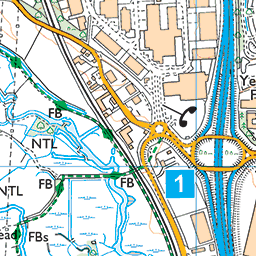

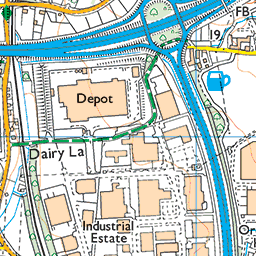


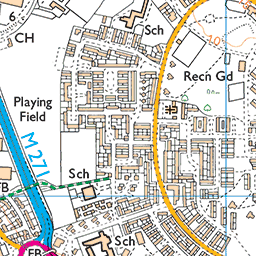












The custom route elevation is created when you use the distance calculator (above) to draw a line.
The custom route elevation is created when you use the distance calculator to draw a line.
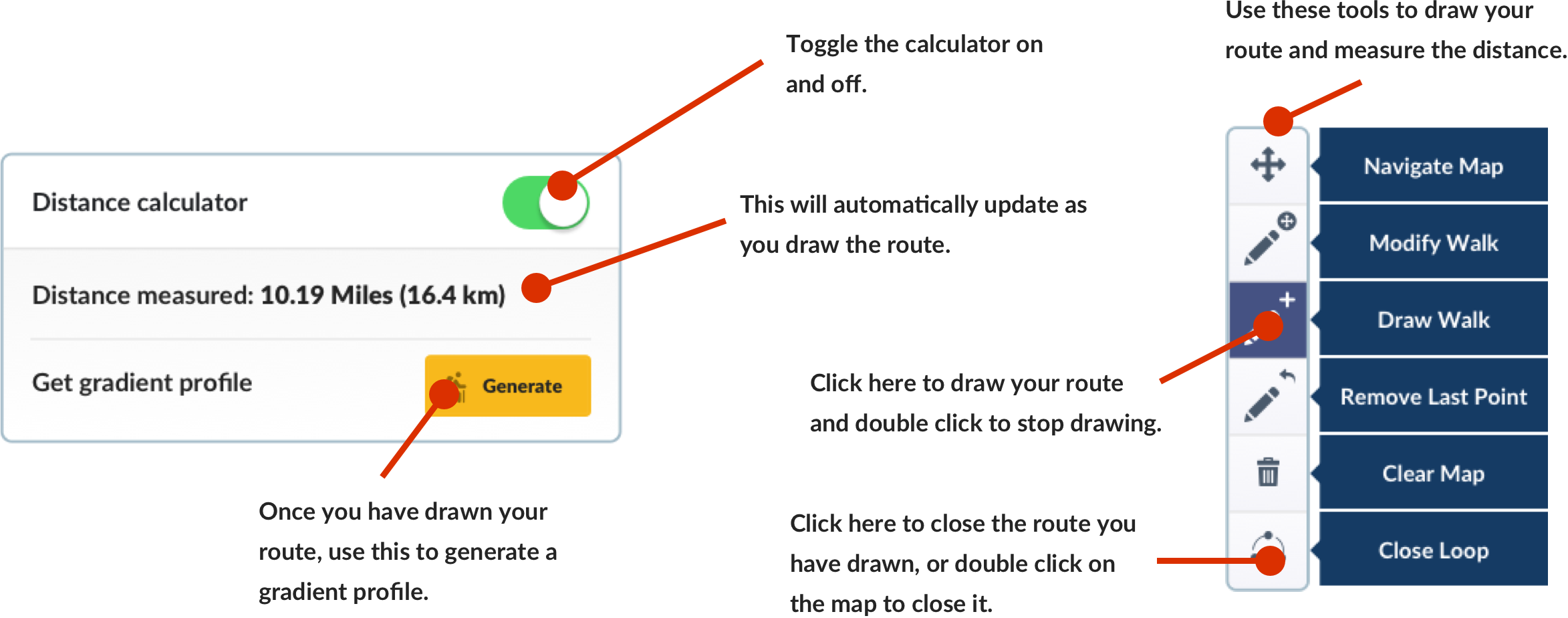
Other itineraries that may interest you
Looking for something similar? Here are some ideas we think you'll love...


